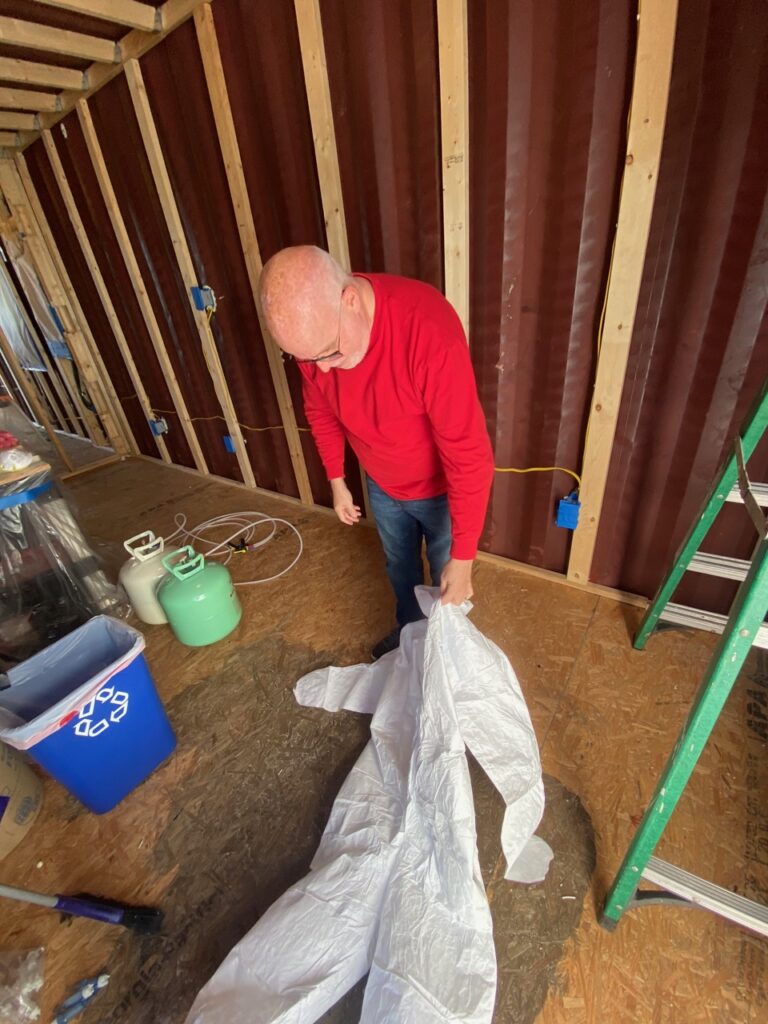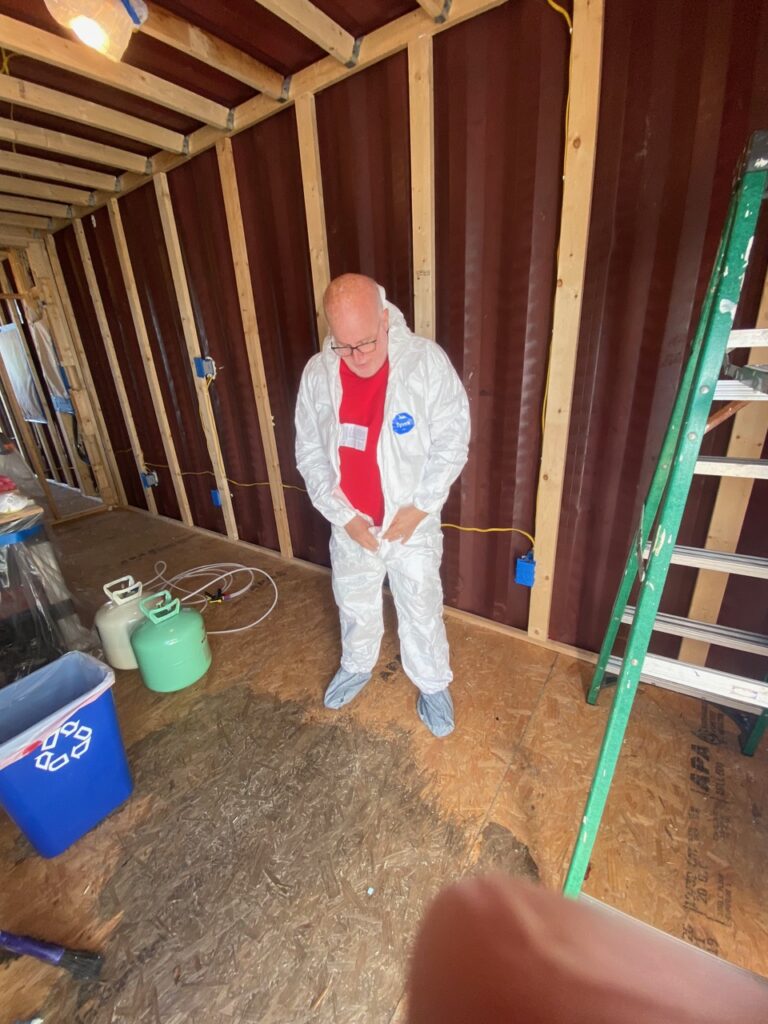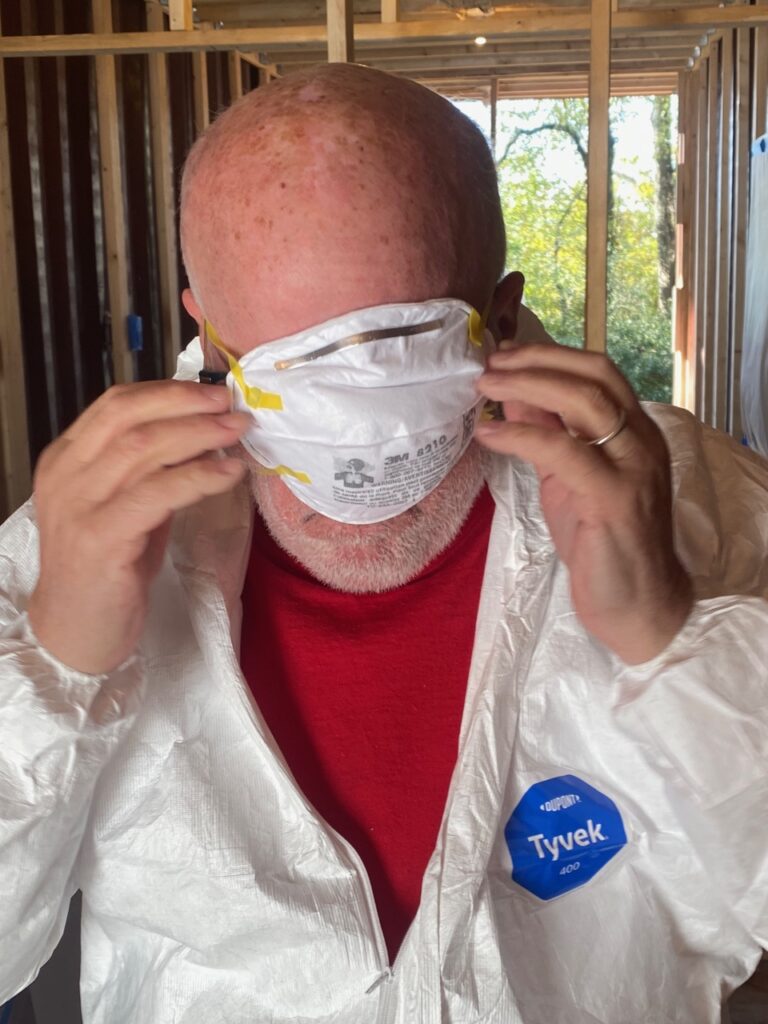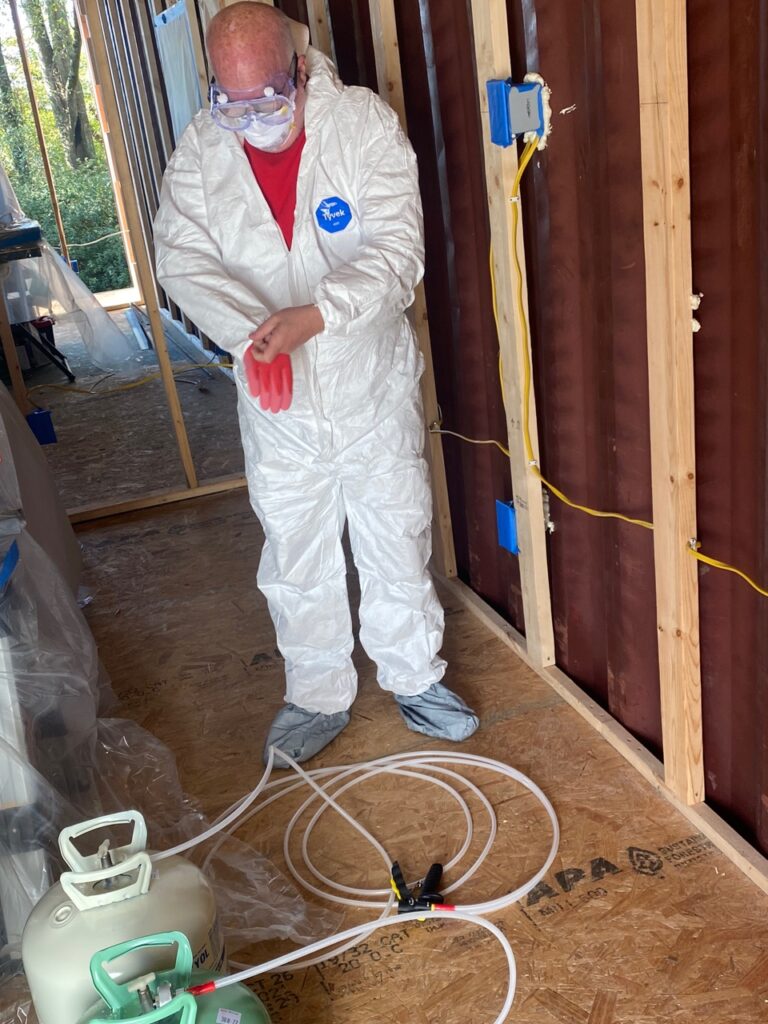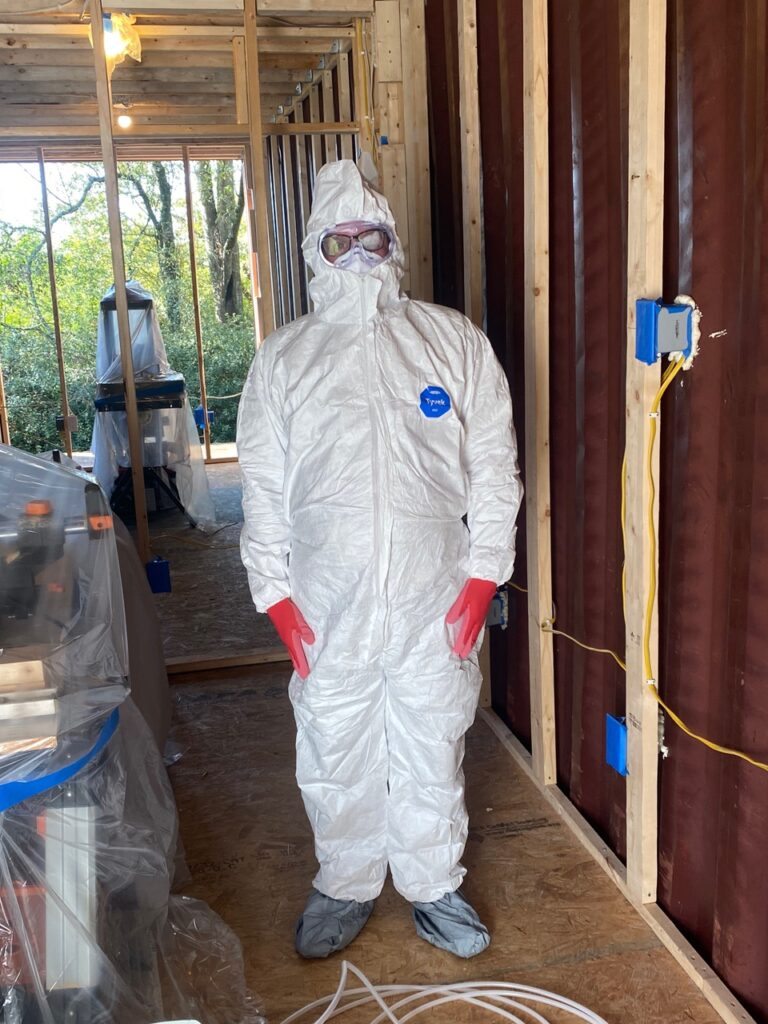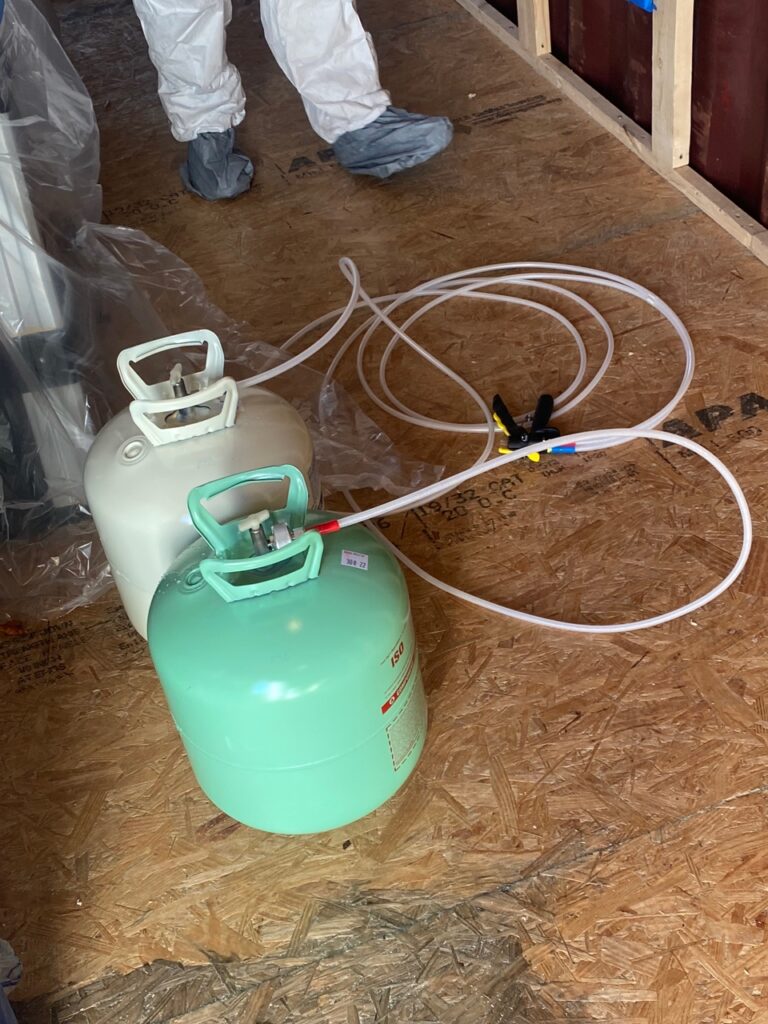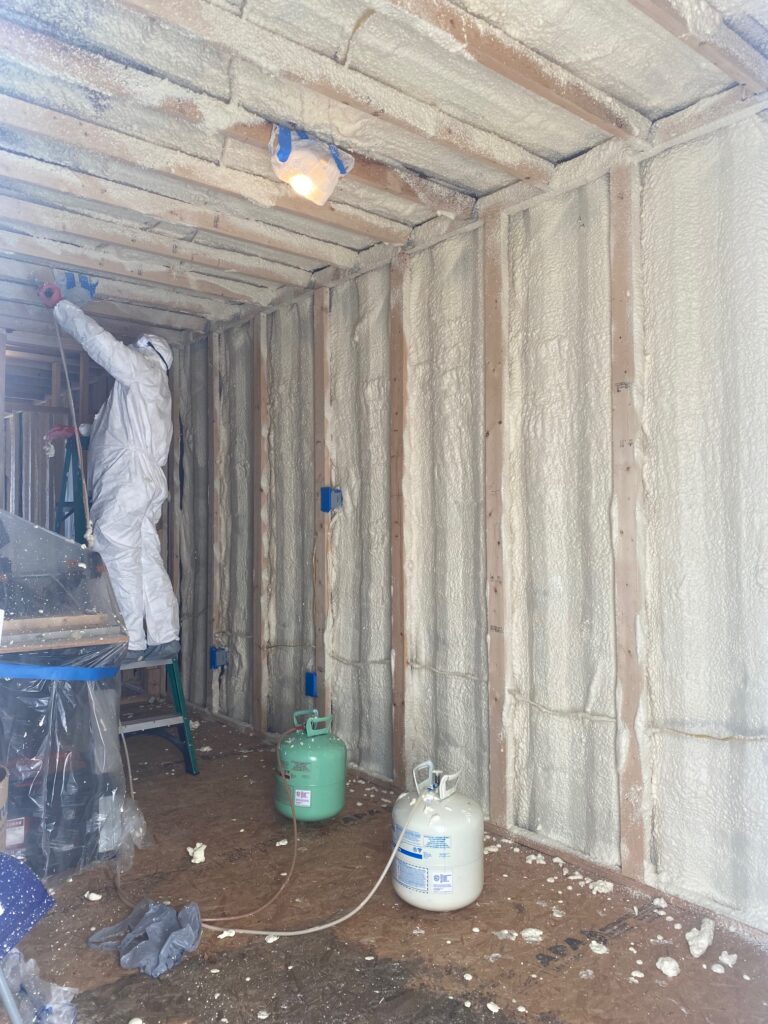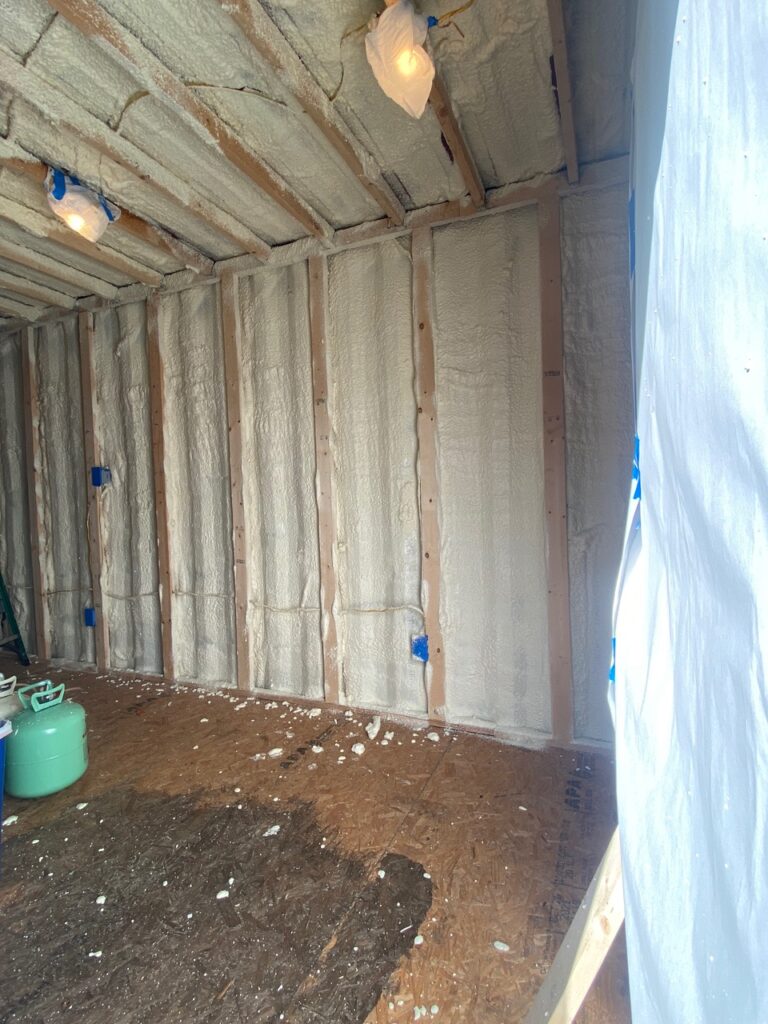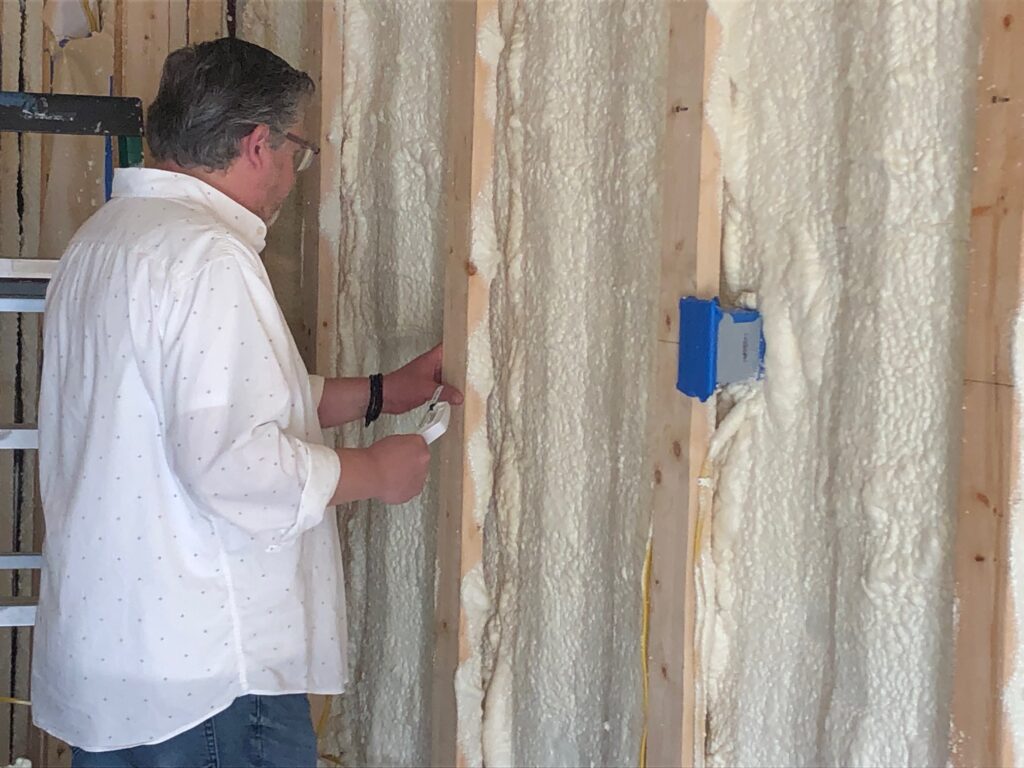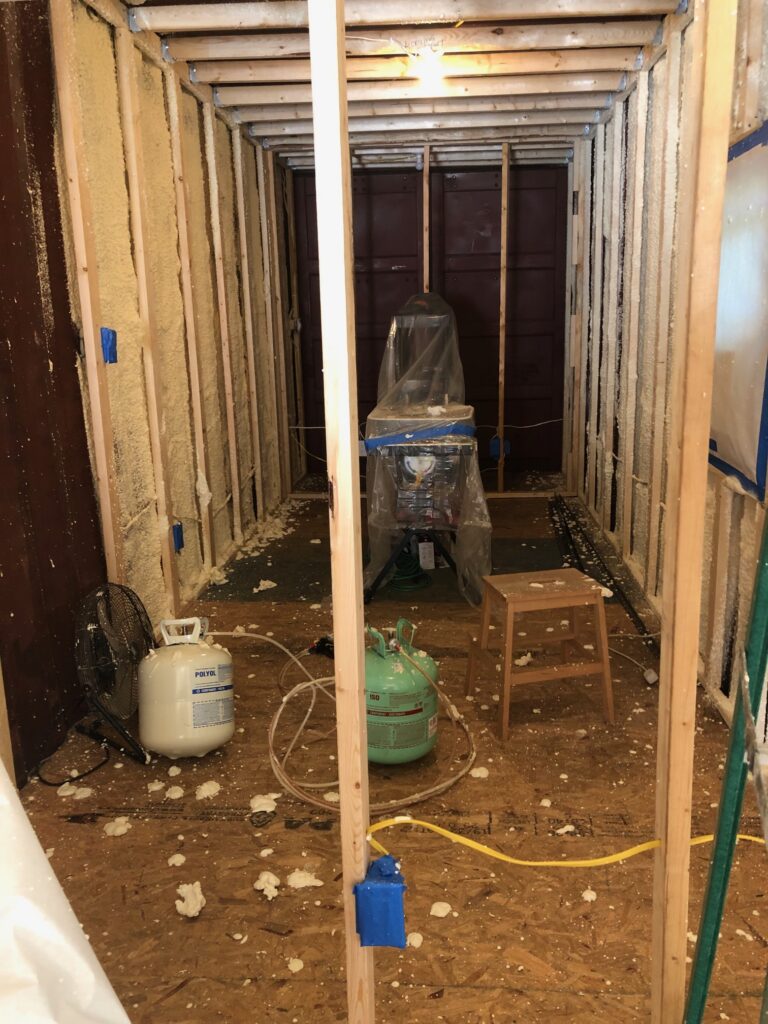Well!
Today was the Big Day, and here are several lessons learned:
- FOUR FAN SPRAY NOZZLES ARE NOT NEARLY ENOUGH FOR 650 SQUARE FEET OF FOAM.
- The people who said that you should cover everything in sight because the foam ends up everywhere were right.
- FOUR FAN SPRAY NOZZLES ARE NOT NEARLY ENOUGH FOR 650 SQUARE FEET OF FOAM.
Our FROTH-PAK Low GWP 650 Spray Gun Indoor/Outdoor Spray Foam Insulation kit arrived at Lowe’s yesterday afternoon, a day later than anticipated. I was a bit nervous considering we fly back to California tomorrow.
Because the chemicals work best when they’re around 80 degrees, and because the overnight temperature here in southwest Mississippi was in the 30s, the two chemical tanks spent the night in the bathroom with a space heater. The temperature of the surface on which you’ll spray your foam is less important than that of the chemicals, though the recommendation is that it should be above 65 degrees. The morning sun took care of that part, and we achieved very good results, foam-expansionwise. Unlike what we experienced last summer, in this case we wanted the container to warm up.
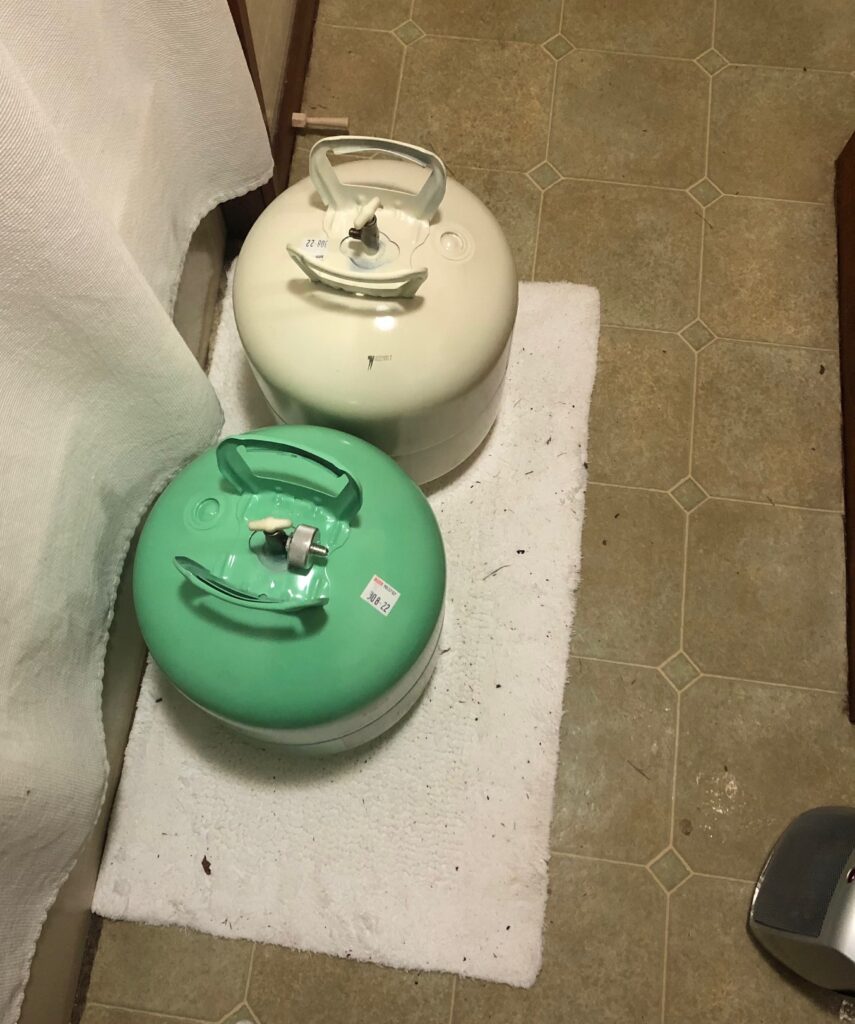
I mentioned in a previous post that I’d been cramming for the exam, so to speak, by watching YouTube videos galore. But to give you an idea of just how much this stuff wormed its way into my brain, I’ll tell you about the dream I had last night.

In it, I removed the two tanks from the bathroom and lugged them out to the container. These tanks, by the way, are somewhat larger and a lot heavier than the propane tanks you might use on a barbeque grill. I donned my protective gear and began to spray. But instead of foaming up, expanding and hardening, there was only a sloppy, gloppy mess of goo, which ran down the walls of the container like butter cream would if you included an iced cake in an outdoor buffet in Tucson in August.
Initially unable to make sense of the situation, I at last realized I had connected the spray gun to only one of the chemical cylinders. The foam-inducing reaction was therefore unable to occur.
That was when I woke up, and that’s how much this project has been on my mind.
The foam kit worked exactly as advertised and as I’d seen in all those videos. Because my purpose here is not to write a how-to manual, I’ll only repeat the basic order of things:
- Put on your Tyvek suit, goggles, mask and gloves. Cover every bit of skin.
- Connect the hoses to the chemical tanks. (They give you a little wrench for the purpose.)
- Turn the knobs on the tanks to let the chemicals flow.
- Do a test spray of a few seconds into a trash can (without a nozzle attached) to make sure you’re getting an even flow from both tubes.
- Smear a little petroleum jelly around the inside of the spray gun. (They give you a little packet of it.)
- Attach a nozzle.
- Start spraying the foam.
As might be expected, the thickness of the coat will depend on a) how far away from the surface you hold the spray gun, and b) how fast you make your sweeps. I began in what will eventually be our living room, the longest wall first and then the ceiling. That 16- or 18-foot wall section was a good place to start because it was easily accessible and I could reach from floor almost to ceiling without a ladder. I also had room to experiment with various speeds and techniques with the spray.
You’ll see in the video linked here that foam clumps up at the tip of the nozzle. You have to shake or flick it away every so often or your spray becomes uneven..
On the whole, I’m very pleased with how this part worked out. There will still be some scraping to do since some foam got on the studs, but I’m a beginner after all.
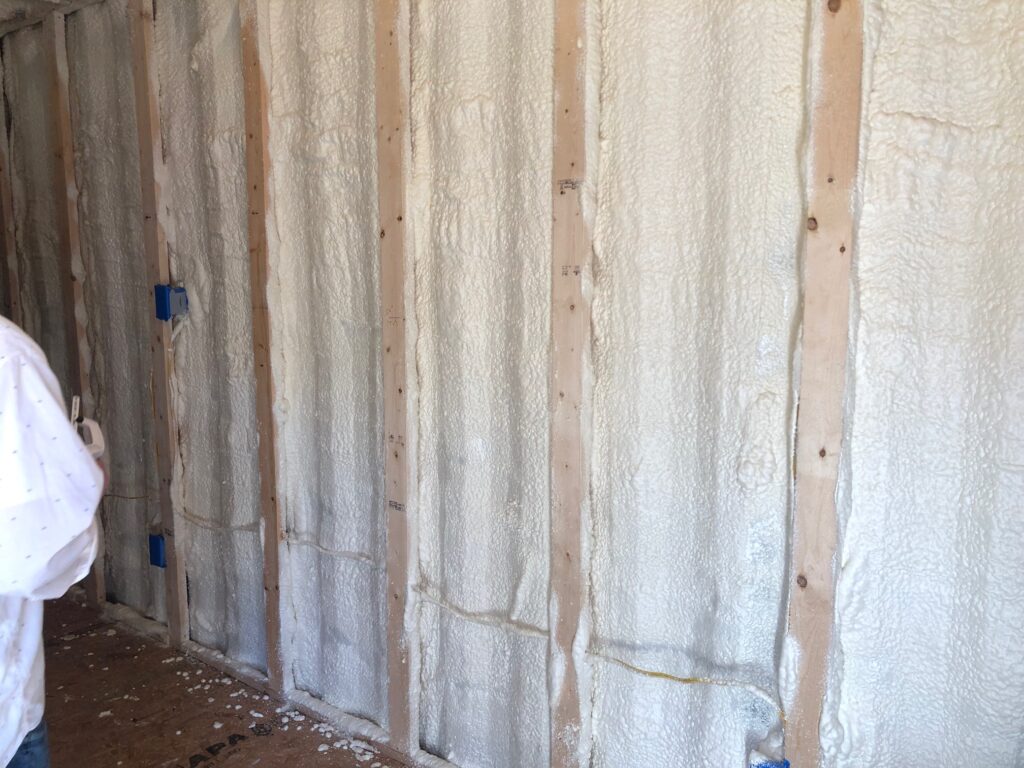
For all my studying and planning, one source of anxiety was the need to swap out spray nozzles from time to time. If you stop spraying for around 30 seconds, the foam hardens in the nozzle so you have to snap on a new one. Which brings me to the fact that FOUR FAN SPRAY NOZZLES ARE NOT NEARLY ENOUGH FOR 650 SQUARE FEET OF FOAM.
The Froth-Pak 650 kit comes with six cone spray nozzles but only four fan spray nozzles. If I were using the foam only in corners or along carpentry joints, the cone spray nozzles might have made sense. But because I was filling entire cavities between and behind studs I needed the fan spray nozzles, and four was most definitely not enough. Here’s why:
Once that long, easily accessible wall was sprayed, I began work on the ceiling. But every few feet, I had to climb down and move the ladder. And afraid of stopping the spray for too long, knowing I didn’t have many nozzles, I became a little frantic, which resulted in incomplete coverage in several areas. And from time to time I had to move both containers, which ate up precious seconds. In addition, the work table with a saw and other tools on it, although draped with plastic, was in the way as I moved the ladder around.
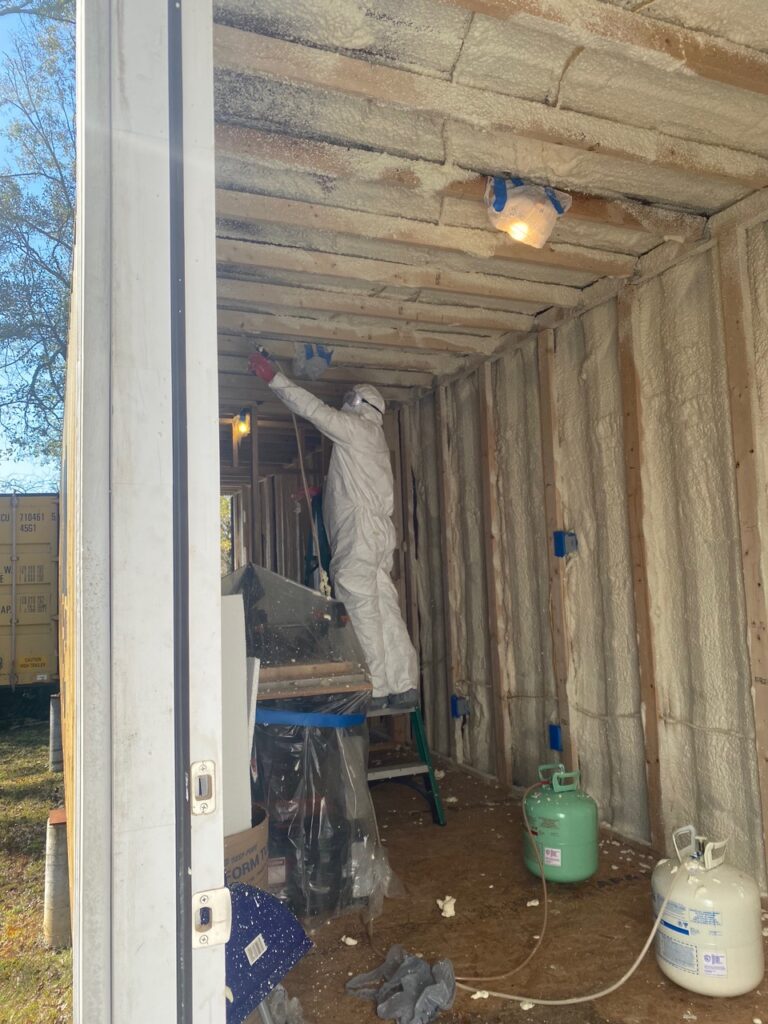
A further complication was that my glasses were fogging up. The safety goggles I bought fit over my glasses just fine, but the mask created the fog, which in turn affected my ability to see what I was doing.
I’ll need to do some touching-up at some point, but I estimate that I managed 90 percent of what needed doing on this container with the Froth-Pak 650.
Calvin will be in charge of scraping the studs and the floor. The floor is kind of a mess.
TAKEAWAYS
- In a confined space like our container, the work would have been much easier if we’d removed the tools altogether, rather than just covering them with plastic. Especially given the clock-is-ticking anxiety, it was nerve-wracking to have to move the ladder and chemical cylinders constantly, and lean and stretch to reach the entire ceiling.
- FOUR FAN SPRAY NOZZLES ARE NOT NEARLY ENOUGH FOR 650 SQUARE FEET OF FOAM. The next time I do insulation, I’ll order extra nozzles. Online, they’re around $18 for five or $45 for 25. This will eliminate a lot of stress.
